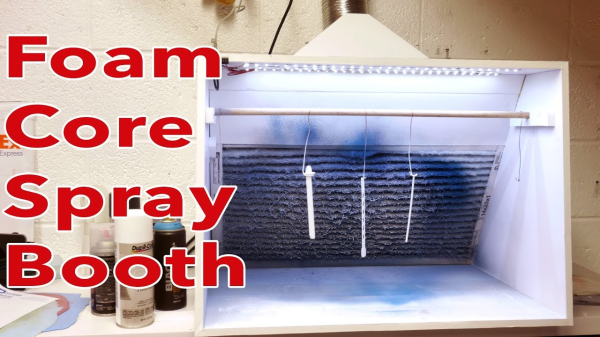[Blondihacks] wanted to do powder coating for a model train without a lot of special equipment. She started with an Eastwood kit that runs about $230. Depending on the options, you can get the gun by itself for between $110 – $170. However, you will need more than just this kit. You can see how [Blondihacks] used the kit in the video below.
The idea behind powder coating is simple: an electrostatic charge attracts a powder — usually some polymer — and makes it stick to an item. Then heat or UV light turns the powder into a hard finish much tougher than paint. Powder coating can be thicker than paint and doesn’t run, either.
The gun requires a small air compressor, and you need an electric oven, which could be a toaster oven. It probably shouldn’t be an oven you plan to use for food. It should also be in a well-ventilated area, plus you’ll want a respirator or dust mask. [Blondhacks] used a portable paint booth so as not to spew powder everywhere, which looked nice, although you could just use a big cardboard box. A custom jig to hang the parts while spraying, and she was ready to go.
If you are on a budget, by the way, you can get a kit from Harbor Freight for a bit less. It probably has fewer accessories, and we don’t know how it compares, but it is an option for much less money. Either way, you need a small air pressure regulator, and you also need a dryer and a filter for the air because you need dry and clean air so as not to contaminate the powder.
The part is grounded, and the gun charges the powder as it sprays. Once coated, you stick the part in the oven for about 20 minutes. The results look good and, compared to a painted part, the coating was super tough. For intricate parts, you can heat the part and then dip it in fluid-like powder. If you prefer to stick to regular powder coating, we have some tips.
Continue reading “Getting Geared Up For Home Powder Coating”














